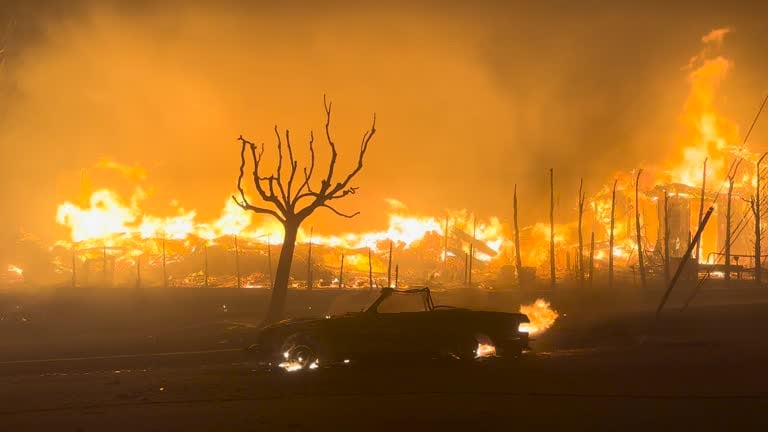Step-by-Step Guide to Debris Removal & Rebuilding After the Pacific Palisades Fire

Debris Removal, Insurance, and Rebuilding: What You Need to Know
Get the answers you need!
Getting everything in order to start rebuilding after the Pacific Palisades Fire is a lengthy and complicated process, but having a clear roadmap can help ease the stress. This step-by-step guide walks you through every stage of recovery—from debris removal and insurance claims to rebuilding and financial assistance. Whether you’re opting into the government-sponsored debris removal program or handling cleanup privately, this guide ensures you know exactly what to do and when to do it.
What You'll Learn
-
Understanding the debris removal process: Learn how Phase 1 (hazardous materials removal) and Phase 2 (structural debris cleanup) work and what to expect.
-
Choosing between government-sponsored or private debris removal: Get details on opting in, opting out, and the necessary permits for private cleanup.
-
Navigating inspections and property clearance: Know what happens during final site inspections and how to obtain clearance before rebuilding.
-
Securing permits and financial assistance: Find out which permits you need to start reconstruction and explore available financial aid options.
-
Building a safer, fire-resistant home: Discover best practices for wildfire-resistant materials and landscaping to protect your property in the future.
-
Step 1: Confirm Your Eligibility & Understand the Process
-
Step 2: Submit Your Right-of-Entry (ROE) Form
-
Step 3: Wait for Phase 1 (Hazardous Materials Removal)
-
Step 4: Phase 2 – Debris Removal Begins
-
Step 5: Private Cleanup (If Opting Out of Government Program)
-
Step 6: Receive Final Inspection & Property Clearance
-
Step 7: Apply for Rebuilding Permits & Start Reconstruction
-
Step 8: Explore Financial Assistance & Insurance Options
-
Step 9: Start Rebuilding & Moving Forward
-
Schedule a conversation >>>
Step 1: Confirm Your Eligibility & Understand the Process
Before starting the debris removal process, confirm whether your property qualifies for the government-sponsored debris removal program or if you’ll need to handle cleanup privately.
-
Check if your property is eligible for Phase 2 removal by visiting LA County Recovery.
-
Understand the difference between Phase 1 & Phase 2 – Phase 1 removes hazardous materials like asbestos, propane tanks, and batteries, while Phase 2 clears structural debris such as fire-damaged foundations and hazardous trees.
-
Decide whether to opt in or opt out – The government program is fully funded, but private cleanup requires permits, regulatory compliance, and personal financial responsibility.
Step 2: Submit Your Right-of-Entry (ROE) Form
If you opt into the government debris removal program, you must submit a Right-of-Entry (ROE) form to authorize crews to access your property. This form is crucial to start the cleanup process.
-
Submit your ROE form online or in person by the deadline (March 31, 2025) to avoid missing out on free debris removal services.
-
Ensure all required documentation is included to prevent processing delays and complications.
-
Monitor updates from LA County Public Works to check the status of your submission and approval.
📌 Submit your ROE form here: ROE Submission Portal
Step 3: Wait for Phase 1 (Hazardous Materials Removal)
Phase 1, led by the EPA, is dedicated to removing hazardous materials that pose immediate health and environmental risks. This is a critical step before structural debris can be cleared.
-
Do not disturb your property – EPA crews need to access all fire-damaged areas to safely remove hazardous materials.
-
Ensure easy access by unlocking gates, removing obstructions, and providing any necessary property information.
-
Check your property’s Phase 1 status using the county’s online tracking system.
📌 Track cleanup progress: LA County Recovery Dashboard
Step 4: Phase 2 – Debris Removal Begins
Once Phase 1 is complete and your ROE is verified, Phase 2 cleanup will begin. This step involves clearing major fire-related debris from your property.
-
Removal of structural debris, including fire-damaged walls, roofing, and destroyed buildings.
-
Hazardous trees that pose a risk will be assessed and removed by certified professionals.
-
Soil testing and removal will take place if contamination is detected, ensuring the land is safe for rebuilding.
-
Erosion control measures such as silt fences and straw wattles will be installed to protect the land from runoff and further damage.
⚠️ Ensure your contact information is up to date so crews can notify you 72 hours before work begins.
Step 5: Private Cleanup (If Opting Out of Government Program)
If you choose private debris removal, you must comply with strict regulations and permitting requirements to ensure safe and legal cleanup.
-
Hire a licensed debris removal contractor who is qualified to handle fire-damaged materials.
-
Obtain necessary permits from LA County before beginning work.
-
Conduct an asbestos survey and properly dispose of hazardous materials according to environmental laws.
-
Submit a cleanup completion report proving compliance with all regulations.
📌 Check private debris removal requirements: LA County Private Cleanup Guidelines
Step 6: Receive Final Inspection & Property Clearance
Once debris removal is finished, the county will conduct a final inspection to ensure all debris and contaminants have been properly removed.
-
A final site inspection will be conducted to verify compliance with cleanup standards.
-
You will receive an official clearance notification allowing you to proceed with rebuilding.
-
If additional soil testing is required, it must be completed before construction begins to ensure a stable foundation.
📣 Get updates on property clearance status: Final Inspection Process
Step 7: Apply for Rebuilding Permits & Start Reconstruction
With your property officially cleared, you can begin planning and executing the rebuilding process.
-
Apply for necessary building permits through LA County to ensure compliance with updated fire codes and safety regulations.
-
Consult with structural engineers if you plan to reuse an existing foundation or need additional stability assessments.
-
Hire a licensed contractor with experience in wildfire recovery construction.
-
Follow all updated fire safety and zoning requirements to prevent future hazards.
🛠️ Start your rebuilding permit application: LA County Building Permits
Step 8: Explore Financial Assistance & Insurance Options
The financial impact of rebuilding can be significant, but various assistance programs are available to help homeowners recover.
-
FEMA Grants – Available for qualified homeowners needing financial aid.
-
SBA Disaster Loans – Low-interest loans designed to cover rebuilding and repair costs.
-
Insurance Claims – Work closely with your provider to maximize coverage for reconstruction.
📌 Apply for financial aid:
🔗 FEMA Disaster Assistance
🔗 SBA Disaster Loan Program
Step 9: Start Rebuilding & Moving Forward
Once all necessary permits and approvals are in place, construction can begin.
-
Begin reconstruction with an approved contractor who specializes in fire recovery.
-
Follow local building codes and fire safety requirements to ensure your home is built to withstand future risks.
-
Stay informed about community recovery efforts and additional resources that may become available.
-
Implement fire-resistant building materials and defensible space landscaping to reduce future wildfire risks.
Select an option below:
- Meet With a Human
- Complete a Form
The Magic Module
Congrats! You've just become a magician. This is the do-it-all module where you can let your creativity run wild. The best part is that it's just going to keep getting more and more awesome over time.
Residential Waterproofing Conversation
Get More Info about your waterproofing needs.
We'll reach out in the next 48 hours to schedule your first conversation via phone or Zoom call.
What's Next?
Still have questions about your Bay Cities Construction adventure. Then keep learning more.



